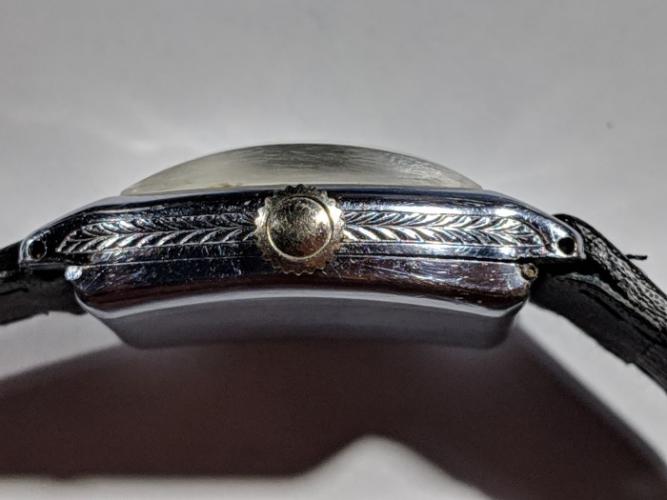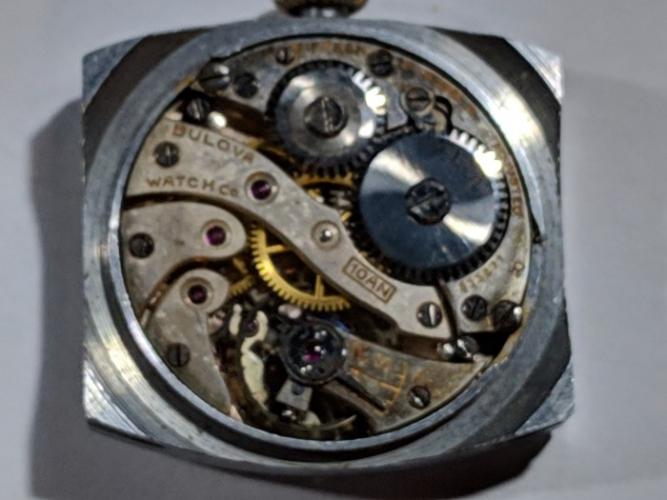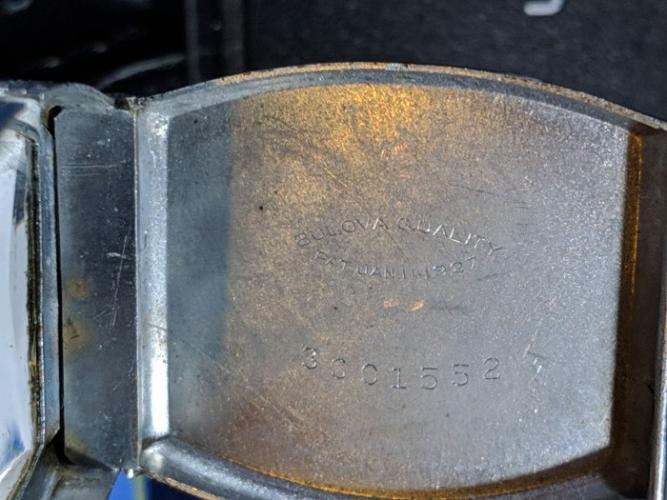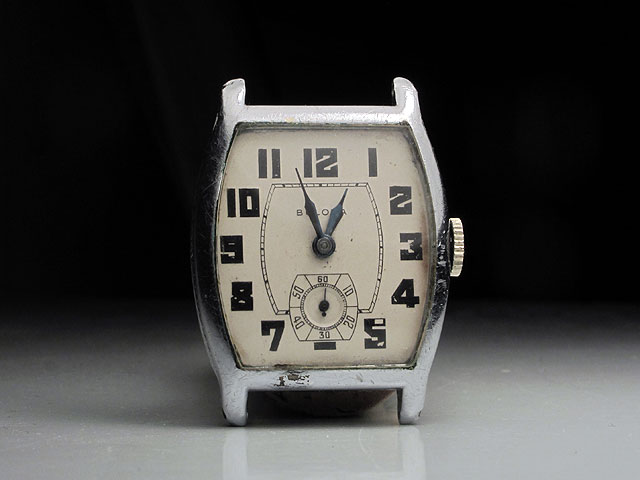Bulova LaFayette
15 Jewels
CAL 10AN
Serial 533277
Does not hint as to where the movement was made
Case Serial 8301552
Case Signed Bulova Quality
PAT. JAN. 11. 1927
The watch keeps good time for its age.





In reply to Jabs any thoughts on model, I by Paul Clegg
In reply to One thing I have ommited to by Paul Clegg
I'm not so sure that's a re-dial, that looks like old Radium to me. The chapter ring around the sub seconds is also very good, something re-dials tend to fudge.
A Geiger counter would tell the tale. Although a stripped and refin dial will still be radioactive, it won't be as hot as the original chunky Radium paint. I've spoken with many old watchmakers about this, and they were all adamant that no one in their right mind would re-do a dial using fresh Radium.
We've discussed this extensively elsewhere, but just a quick refresher:
Radium has a half life of 1601 years. The Zinc Sulfide degrades meaning no more glow, but the Radium itself is still as hot as the day it was applied. Exposure is blocked to the rear by the movt and dial, the alpha particles are emitted through the crystal. It is hazardous mainly by ingestion, like if you were to flake it off and accidentally inhale the particles or consume them.
The body sees Radium as Calcium and imports it into bones, giving a terrible body wide ache that will not dissipate after much exposure. My Grandfather was a watchmaker during WWII and was required to re-paint dials, aircraft instruments and warning signs for Bristol Aerospace with Radium paint. The continued exposure gave him Radium poisoning. They knew full well the risks of the stuff, they had known since the 20's or even earlier, but it was wartime and you just had to get on with it.
So basically A geiger counter would be able to detect the still hot Radium on the digits, it would show a marked spike of approximatley 20 millirem or more. Refinished dials do not read this high.

